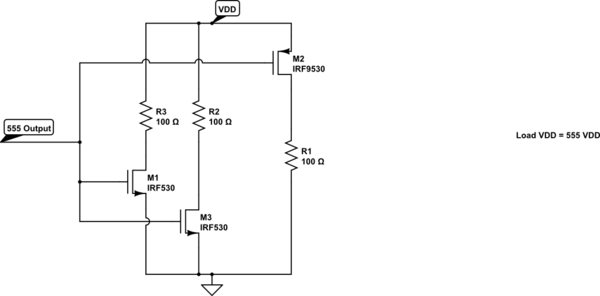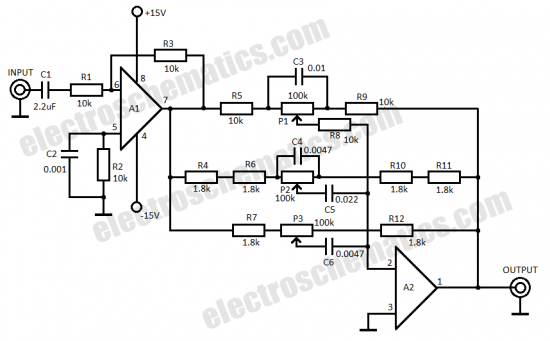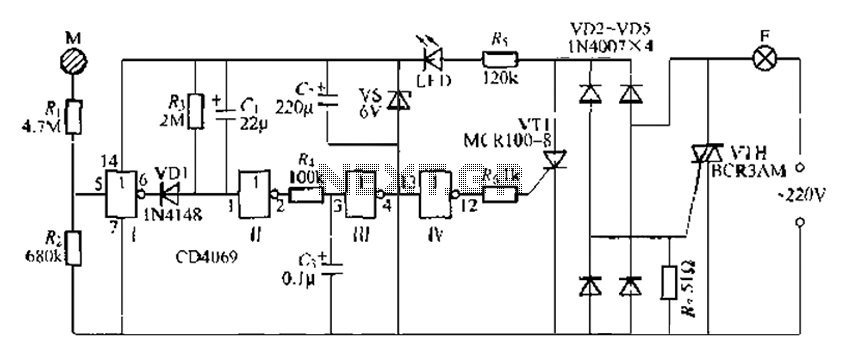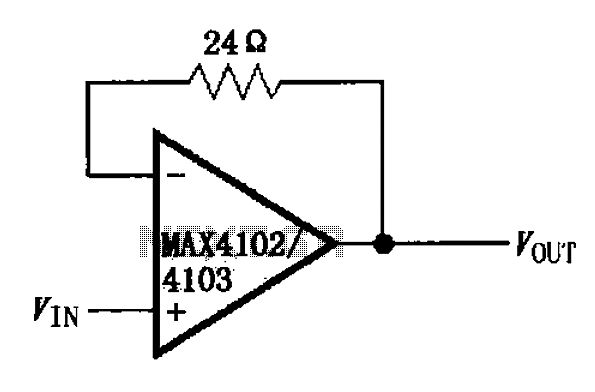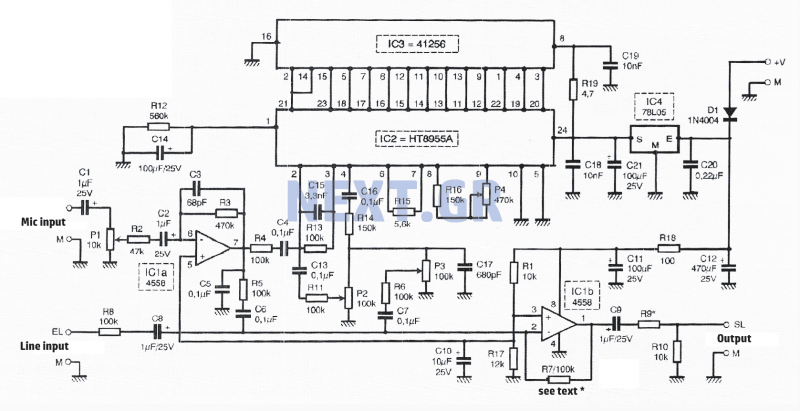
Combustible gas alarm circuit diagram 7812 7805 555

The circuit consists of a buck rectifier and voltage regulator, a gas sensor, a comparator circuit, and an alarm sound circuit. The buck regulator circuit includes a transformer, a bridge rectifier, and components such as QL, IC3 (7812), and IC4 (7805). The gas sensor is a semiconductor type, specifically the QM-N5 or MQ-N series. The comparator utilized is a dual voltage comparator, LM393 (IC1). The audio alarm circuit is based on the 555 timer (IC2), which drives a speaker (Y) and an LED. When the concentration of flammable gas exceeds a certain threshold, the resistance of the semiconductor gas sensor (QM-N5) decreases, resulting in an increase in the voltage at the input of the comparator (IC1). When this voltage exceeds the reference voltage, IC1 outputs a high signal, triggering the 555 timer. The 555 timer, configured with resistors R3, R4 and capacitor C1, generates an oscillation frequency of approximately 1000 Hz. This output activates the speaker to produce a 1 kHz alarm sound and causes the LED to flash. Conversely, when the gas concentration is within normal limits, the resistance of the gas sensor increases significantly, causing the voltage at the comparator input to drop. This results in a low output from IC1 (approximately 0.7 V), resetting the 555 timer and silencing the alarm circuit. The alarm system is designed to emit audible and visual signals when flammable gas concentrations exceed 0.04%.
The described circuit operates by integrating multiple components to create a reliable gas detection and alarm system. The buck rectifier converts the AC voltage from the transformer into a stable DC voltage suitable for powering the circuit. The voltage regulators (IC3 and IC4) ensure that the circuit operates within safe voltage levels, providing 12V and 5V outputs respectively for various components.
The gas sensor, either the QM-N5 or MQ-N type, is sensitive to specific flammable gases. It functions by changing its resistance in response to the concentration of gas in the environment. The comparator circuit, using the LM393, continuously monitors the voltage generated by the gas sensor. When the gas concentration rises above the defined threshold, the comparator's output transitions from low to high, activating the alarm system.
The 555 timer, a versatile integrated circuit, is configured in astable mode to generate a square wave output. The frequency of oscillation is determined by the values of resistors R3 and R4, and capacitor C1, allowing for flexibility in tuning the alarm frequency. The output from the 555 timer is used to drive the speaker, producing an audible alarm at 1 kHz, which is significant enough to alert individuals nearby. The LED serves as a visual indicator, providing an additional layer of notification.
In summary, this gas detection alarm circuit is a well-designed system that effectively combines various electronic components to ensure timely alerts in the presence of flammable gases, enhancing safety in environments where such gases may pose a risk. As shown in FIG alarm by a buck rectifier and voltage regulator circuit, gas sensor, comparator circuit and sound the alarm circuit. Buck regulator circuit by a transformer rec tifier and B, the bridge rectifier circuits QL, IC3 (7812), IC4 (7805) and other components. Gas-sensitive semiconductor sensor QM-N5-type or MQ-N-type devices. Comparator IC1 dual voltage comparator LM393. Audio alarm circuit consists of IC2 (555), speaker Y, LED and other components. When the concentration of flammable gas exceeds a certain value, between AB pole semiconductor gas device resistance becomes small, the partial pressure of the resistance R1 increases, the potential of the corresponding comparator IC1 foot rises, and when the above feet when the reference voltage value, IC1 output high, the 555 set, while 555 and R3, R4, C1 composed of the oscillator starts oscillation frequency f 1.44/(R3 + 2R4) C1, as shown in FIG. parameters corresponding to a frequency of about 1000Hz. 555 signal output pin push speaker Y issued lkHz sound alarm signal, and the LED lamp flashes. When the concentration of flammable gas is normal, between the AB QM-N5 resistance becomes very large, the partial pressure resistor R1 becomes smaller, the potential reduction of the corresponding IC1 foot, IC1 output low ( 0.7V), 555 Reset, the alarm circuit does not occur.The alarm circuit sends out the concentration of flammable gas is higher than 0.04% audible and visual alarm signals to alert the owner attention.
The described circuit operates by integrating multiple components to create a reliable gas detection and alarm system. The buck rectifier converts the AC voltage from the transformer into a stable DC voltage suitable for powering the circuit. The voltage regulators (IC3 and IC4) ensure that the circuit operates within safe voltage levels, providing 12V and 5V outputs respectively for various components.
The gas sensor, either the QM-N5 or MQ-N type, is sensitive to specific flammable gases. It functions by changing its resistance in response to the concentration of gas in the environment. The comparator circuit, using the LM393, continuously monitors the voltage generated by the gas sensor. When the gas concentration rises above the defined threshold, the comparator's output transitions from low to high, activating the alarm system.
The 555 timer, a versatile integrated circuit, is configured in astable mode to generate a square wave output. The frequency of oscillation is determined by the values of resistors R3 and R4, and capacitor C1, allowing for flexibility in tuning the alarm frequency. The output from the 555 timer is used to drive the speaker, producing an audible alarm at 1 kHz, which is significant enough to alert individuals nearby. The LED serves as a visual indicator, providing an additional layer of notification.
In summary, this gas detection alarm circuit is a well-designed system that effectively combines various electronic components to ensure timely alerts in the presence of flammable gases, enhancing safety in environments where such gases may pose a risk. As shown in FIG alarm by a buck rectifier and voltage regulator circuit, gas sensor, comparator circuit and sound the alarm circuit. Buck regulator circuit by a transformer rec tifier and B, the bridge rectifier circuits QL, IC3 (7812), IC4 (7805) and other components. Gas-sensitive semiconductor sensor QM-N5-type or MQ-N-type devices. Comparator IC1 dual voltage comparator LM393. Audio alarm circuit consists of IC2 (555), speaker Y, LED and other components. When the concentration of flammable gas exceeds a certain value, between AB pole semiconductor gas device resistance becomes small, the partial pressure of the resistance R1 increases, the potential of the corresponding comparator IC1 foot rises, and when the above feet when the reference voltage value, IC1 output high, the 555 set, while 555 and R3, R4, C1 composed of the oscillator starts oscillation frequency f 1.44/(R3 + 2R4) C1, as shown in FIG. parameters corresponding to a frequency of about 1000Hz. 555 signal output pin push speaker Y issued lkHz sound alarm signal, and the LED lamp flashes. When the concentration of flammable gas is normal, between the AB QM-N5 resistance becomes very large, the partial pressure resistor R1 becomes smaller, the potential reduction of the corresponding IC1 foot, IC1 output low ( 0.7V), 555 Reset, the alarm circuit does not occur.The alarm circuit sends out the concentration of flammable gas is higher than 0.04% audible and visual alarm signals to alert the owner attention.
